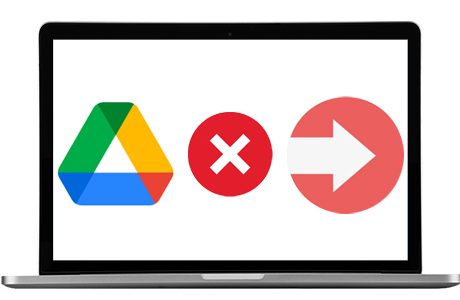Cotton plants have been an integral part of the United States and American history since the first days of colonization.
Along with tobacco and the gold and silver mines of South America, cotton was one of the most valuable exports which created an immediate demand in Europe, resulting in many investors funding some of the first communities to profit from cotton production.
Cotton is a labor-intensive difficult crop to grow and harvest, unfortunately, slave labor was sued for much of the hardest aspects of the job. With that said, people are inclined to always “build a better mousetrap” and also have tried more efficient means of harvesting cotton.
Although modern technology has made for much more efficient cotton machinery with an expected use for industrial farming, the simplicity and beauty of antique equipment can make for a fun hobby to restore and use on a smaller scale than what is required of commercial farms.
Some have been designed as an attachment to be used with a regular tractor, essentially running the tractor in reverse with the large wheels to the front instead of the rear, others were made as independent designs specific for the single use of picking cotton and transporting it back to the barn to be cleaned by a cotton gin and baled as a separate process.
Over the years, there have been some exceptionally cool ideas about how to pick cotton without the extensive labor required when people have to harvest by hand.
1820’s: Trained Monkeys
Nobody can argue how cool an idea it was when a Louisiana farmer had the idea in 1820 to purchase a group of money and train them to pick cotton.
This almost sounds like a joke from a comedy movie, but the guy actually thought it might work. Spoiler alert, it didn’t. He was able to teach them to pick cotton while in captivity, but when he released them into the fields to actually conduct the harvest, they quickly became distracted and ran off into the surrounding woods.
Okay, the proof is in the pudding and maybe that wasn’t a “great” idea, but such idiocy certainly brings a few giggles to nearly everyone when they hear the story.
Patent Number 7,631, Subclass 48
Invented in 1850 by Samuel S. Rembert and Jedediah Prescott of Memphis, TN., the first cotton picking machine used cylinders and disks to pick cotton.
The interesting aspect of the invention was it’s being designed to add more units capable of harvesting more than one row at a time, a concept still used by modern harvesters.
It didn’t work well in terms of reliability because it required the operator to constantly stop and clean off the cotton oils as they jammed up the operating mechanisms, but it did prove such a machine was possible but needed some further development and improvement.
1930’s: John Daniel Rust
Rust invented one of the first usable cotton pickers in 1933, which didn’t become commercially popular until 1938. It attached to the rear of a tractor and picked cotton without stripping it.
Pictures show the tractor driver often holding the steering wheel to maintain a straight line while looking over their shoulder to evaluate how the harvest was proceeding.
This was the machine that made mechanical cotton pickers an integral aspect of cotton farms, as they could produce as much cotton in an hour as had previously been expected after a day’s worth of labor.
The patent was sold in the 1940s and used by different companies before becoming an outdated machine, even though some of the most basic concepts it used are still part of modern cotton pickers, with a few upgrades and improvements to details of the harvest process.
1940’s International Harvester Model 114A
The I.H. Model 114A was one of the first cotton picking specific machines, and set a new standard for cotton farmers when it came out in 1943.
The problem with previous mechanical harvesting was it didn’t always clean the cotton efficiently enough to go straight to the cotton gin for separation.
The 114A resolved that problem and reliably picked cotton while removing unopened bolls and other debris which would clog a gin. By doing so, the amount of labor required during a cotton harvest was immensely lowered while increasing production rates.
With a growing demand for cotton worldwide both as a fabric and for other uses such as in cooking oil or rubber products, such an invention had become an absolute necessity toward a farm’s continued success in the cotton industry.
1950 I.H. M120 Cotton Picker
The I.H. M120 basically added a cotton picker to a tractor in a means which would turn the tractor into a specialized piece of machinery used only to pick cotton. It essentially turned the tractor around to drive with the large wheels in the front behind the spindles which harvested cotton one row at a time.
The steering wheel and seat were moved to face what is generally considered the rear of the tractor, and the basket was mounted over the engine hood.
Although modern cotton pickers operate much the same way with rear-wheel steering, they do more than just picking the cotton but also strip and bale the crop. It’s interesting to see how that design began and how it has evolved over time.
Certi-Pik USA Parts and Equipment
If you’re fortunate enough to find an antique cotton picker, it’s likely going to be in a condition that requires restoration, and that’s going to require parts.
At Certi-Pik, we provide certified aftermarket OEM parts for modern and older cotton machinery according to your needs; we’re specifically certified by John Deere and Case/IH. Although we also sell parts for many other makes of cotton picker and tractor equipment.
Our staff is trained and understands both the mechanical needs of your equipment and the importance of getting it fixed as quickly as possible to avoid downtime in the field. We can provide advice if you have questions about which part will best fix any problem your equipment may be having.
Contact us for all your aftermarket parts needs so we can help you achieve your goals of producing a successful and profitable cotton crop each year.






















